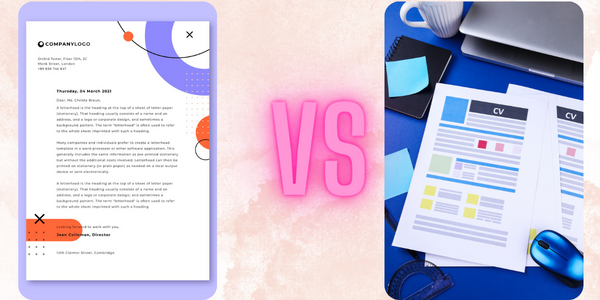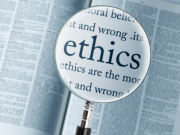 The best strategy to increase the number of job offers you receive is to submit a strong cover letter along with your CV. These two professional documents, however, are not the same but they increase your chances of landing a job, do not forget to know the differences.
The best strategy to increase the number of job offers you receive is to submit a strong cover letter along with your CV. These two professional documents, however, are not the same but they increase your chances of landing a job, do not forget to know the differences.
Cover letters and resumes are your two key tools for job hunting. Although each of these documents are important, their functions are significantly different. Your resume provides a thorough description of your education, experience, and skills in the professional industry. It is meant to be a thorough summary of all the things you have to offer a potential employer. In comparison, your cover letter is a short document that serves as an introduction to you and consists of a list of your most important qualifications for the position.
A resume is objective whereas a cover letter is subjective, which is the main difference between the two documents.
When applying for a specific position, job seekers typically send cover letters and resumes. A cover letter describes how the candidate may benefit the business and why he is seeking the position in question, while a resume contains details about a job applicant’s education, credentials, and experience.
Register for AMCAT | India’s Leading Fresher’s Assessment And Job Site (myamcat.com)
Let us talk about what is a resume?
An applicant for a job requires a resume, to highlight their educational background, professional experience, and unique skills. CVs are another term for resumes. Most recent resumes are just one or two pages long.
Candidates must submit a resume for every job. A complete job application is made up of a resume and cover letter.
A resume generally consists of the following six sections:
- Contact details
- Introduction
- Educational background
- Work History
- Relevant skills
- Awards
Now let us move forward and talk about what is a cover letter?
A cover letter is a formal document used to introduce oneself to an employer and discuss your reasons for pursuing a specific position. Unlike a resume, which provides an unbiased assessment of your qualifications, a cover letter is designed to enable you to demonstrate why you are the ideal candidate for a position.
300 to 500 words are the typical length for a cover letter, giving you plenty of space to explain why you’re the best applicant. You can divide your cover letter into the following six sections:
- Header
- Salutation
- Introduction Paragraph
- Main Paragraph
- Concluding Paragraph
- Signature
Differences between a cover letter and a resume:
Importance
You must submit a resume while applying for jobs. On the other side, sometimes, cover letters are frequently required. It depends on the qualities needed to fill the position you’re interested in. Include a cover letter with your resume if you’re unsure.
Structure
A business letter can be similar to the typical cover letter structure. It has a title, an introduction, a body with supporting details, a conclusion, and a closing. Postscripts are an optional flourish that can be used.
There are three different resume formats, each with distinct, well-marked sections. Your header and introduction are among those sections, along with your education, work experience, and skills.
Unlike a cover letter, which is primarily composed of paragraphs, a resume is primarily composed of bullet points.
Purpose
Your resume’s objective is to highlight your qualifications for the position. Your cover letter should explain why you are the best candidate for that position given your qualifications. Your resume and cover letter work best as a package to increase your chances of getting the job you want.
Tone
A resume should be objective and neutral in tone. Depending on the position, the tone of a cover letter varies, but it should have some originality. Just make sure your personality fits the level of your target industry and organisation.
A well-written resume and cover letter are vital when applying for jobs. They can assist you in differentiating yourself from other applicants and convince hiring managers to examine your resume. You may write resumes and cover letters that impress potential employers by using the advice in this article.
FAQ’s
Q.1. How long should my resume be?
Ans. Your resume should not exceed two pages for the majority of candidates. Consider editing your resume to simply include the latest 10 years of your employment experience if it exceeds two pages.
Q.2. What should my personal website or online portfolio look like?
Ans. Your skills, expertise, and abilities can be more fully displayed in a portfolio than they can in a standard resume. A link to your online portfolio can be found on your resumes, cover letters, email signatures, and LinkedIn profiles. Online portfolios are a contemporary update on traditional portfolios.
Q.3. What is the best way to use keywords in a job search?
Ans. Employers can easily find your resume and other online professional profiles by searching for relevant keywords.
Q.4. How long a cover letter should be: words used? Number of paragraphs?
Ans. Typically, these should be three to four paragraphs lengthy and no longer than a page, it can consist of 300-500 words.

























